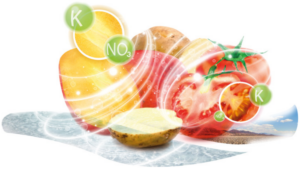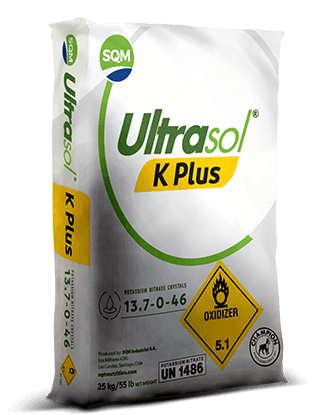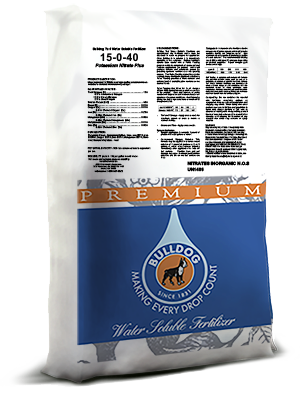It is undeniable! Climate change is already affecting agriculture in the United States. According to worldwide scientific community concern, climate change is already affecting agriculture around the globe, the scarcity of water and the onset of drought are seriously limiting agricultural production. The effects are most evident not only in irrigated crops such as almonds, but also in dryland crops including wheat and corn, among many others. The main problem is water stress—the dreaded phenomenon that inhibits photosynthesis and the photochemical activities of the plants. It affects the enzymatic activities of the plants, resulting in a severe negative impact on the quality and yield of the crop.
Effect of K concentration in the medium solution on plant DW, K-concentration in leaves and WUE

Figure 1. When the K concentration in the nutrient solution of sunflower was increased from 0.1 mM K to 2.5 mM K, then the dry weight (DW) also increased, leaves showed higher K concentrations and WUE was greater (Fournier et al, 2005).
It is estimated that the yield loss due to abiotic stress (the category that includes water stress) is astounding: 65.8% for maize (corn), 82.1% for wheat, 69.3% for soybean and 54.1% for potatoes. Needless to say, actions must be implemented by local agriculture communities. But the farmers themselves have the power to improve the efficiency of water use for their crops—by choosing the right nutrients.
Some nutrients, such as potassium and nitrate, have already proven to significantly boost the efficiency of water use in plants. This type of nutrient is a strategic ally where water supply is restricted. But even in areas where there is adequate water supply, the use of potassium and nitrate will increase the yield per acre, or alternatively, allow any surplus water to be targeted for other additional crops.
Potassium nitrate (KNO3) is a fertilizer that contains a readily available source of two macronutrients that play a very important role in improving Water Usage Efficiency (WUE). Both nitrate (NO3) and potassium (K) are highly soluble and can be easily absorbed by plants.
It is the synergy between potassium and nitrate in the soil that promotes the rapid absorption of both ions by plant roots in the soil. The dominant effect of the presence of N (as NO3), a negative ion, is the stimulation of absorption of positively charged ions in the soil. In turn, potassium stimulates NO3 absorption and promotes root growth. This vital combination has proven to work very efficiently. Plants that are under water stress combined with potassium deficiency, sweat more, and therefore, need to absorb more water to stay healthy. Research showed that wheat plants adequately supplied with K, showed greater WUE when fed with nitrate compared to ammonium as the nitrogen source. And so, potassium nitrate is essential to the efficient use of water.
Water Usage Efficiency (WUE) (g/L water)

Figure 2. The WUE of the wheat was greater when plants were fed with nitrate compared to ammonium as the nitrogen source, when grown under three different K concentrations in the nutrient solution (Lips et al, 1990).
Some studies have concluded that corn (or maize) plants treated with higher potassium have shown a greater adaptation to water stress, and an adequate supply of potassium is essential to improved drought resistance. The role of potassium has been credited with the improved stability of the cell membrane to adjust its osmotic capacity. Potassium also plays a role in controlling the stomatal opening to help regulate transpiration. Therefore, adequate potassium supply is essential to improve drought resistance by enhancing water uptake through the roots and controlling water loss through the leaves. Better water uptake also means better nutrient absorption to aid the crop production.
In times of climate change, water shortages can present a huge cost for agricultural production. Therefore, when rationalizing the use of water, it is just as important to consider the use of potassium nitrate as well as the optimization of water resources for crops. By considering all of these factors, we will be able to optimize water resources to achieve improved harvests, even in adverse conditions.

Figure 3. K intensifies the transport and storage of assimilates from the leaf to the fruit.
BY JW LEMONS
National Sales Agronomist SQM North America - Published in CropLife magazine, april 2019




